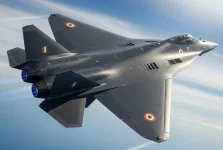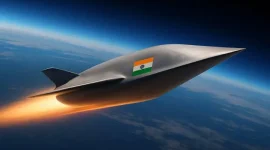- Views: 2K
- Replies: 4
The Defence Research and Development Organisation (DRDO) has showcased its advancements in hypersonic technology by publicly displaying wind tunnel models of three innovative missile systems at its Hypersonic Wind Tunnel facility in Hyderabad. This event highlights India's progress in high-speed missile technology and underscores DRDO's commitment to enhancing national defence capabilities.
Common Hypersonic Glide Body (CHGB): A Versatile Weapon for Strategic Advantage
The first model on display is the "Common Hypersonic Glide Body," a hypersonic weapon designed to travel at speeds exceeding Mach 5. This versatile glide body can be launched from various platforms, including ballistic missile systems, offering India a strategic advantage in both offensive and defensive operations. Its ability to maneuver at high speeds makes it extremely difficult to intercept, providing India with a substantial deterrent capability.AD-AH: Countering Hypersonic Threats with an Indigenous Interceptor
The second model, designated AD-AH, represents a groundbreaking addition to India's Ballistic Missile Defence (BMD) system. This anti-hypersonic interceptor missile is slated to be part of Phase III of the Indian BMD system. Its primary role will be to neutralize hypersonic threats, including Hypersonic Cruise Missiles (HCM) and Hypersonic Glide Vehicles (HGV), within the atmosphere. The development of AD-AH signifies India's proactive approach to countering emerging threats from adversaries who are also developing hypersonic weapons.
LRASHM: A Hybrid Hypersonic Anti-Ship Missile for Enhanced Maritime Strike
The third model showcased is the Long-Range Anti-Ship Hypersonic Missile (LRASHM), which recently underwent its first test by DRDO. Described as a hybrid hypersonic missile, LRASHM uses the K-4 missile as its baseline, indicating a significant leap in India's maritime strike capabilities. This missile is designed to travel at hypersonic speeds, allowing it to engage naval targets with minimal warning time, making it a formidable weapon in naval warfare.
Model P-32: Further Refinement of Hypersonic Glide Body Technology
The fourth model, dubbed P-32, represents another design variant for a Hypersonic Glide Body. This model suggests ongoing experimentation and innovation within DRDO to further refine the technology, potentially offering variations in payload, range, or maneuverability.These wind tunnel models, while still in the developmental phase, demonstrate India's significant progress towards operationalizing hypersonic technologies. Collaboration with academia, industry, and international partners will be crucial for overcoming remaining technical challenges and ensuring these systems meet the stringent requirements of modern warfare.





